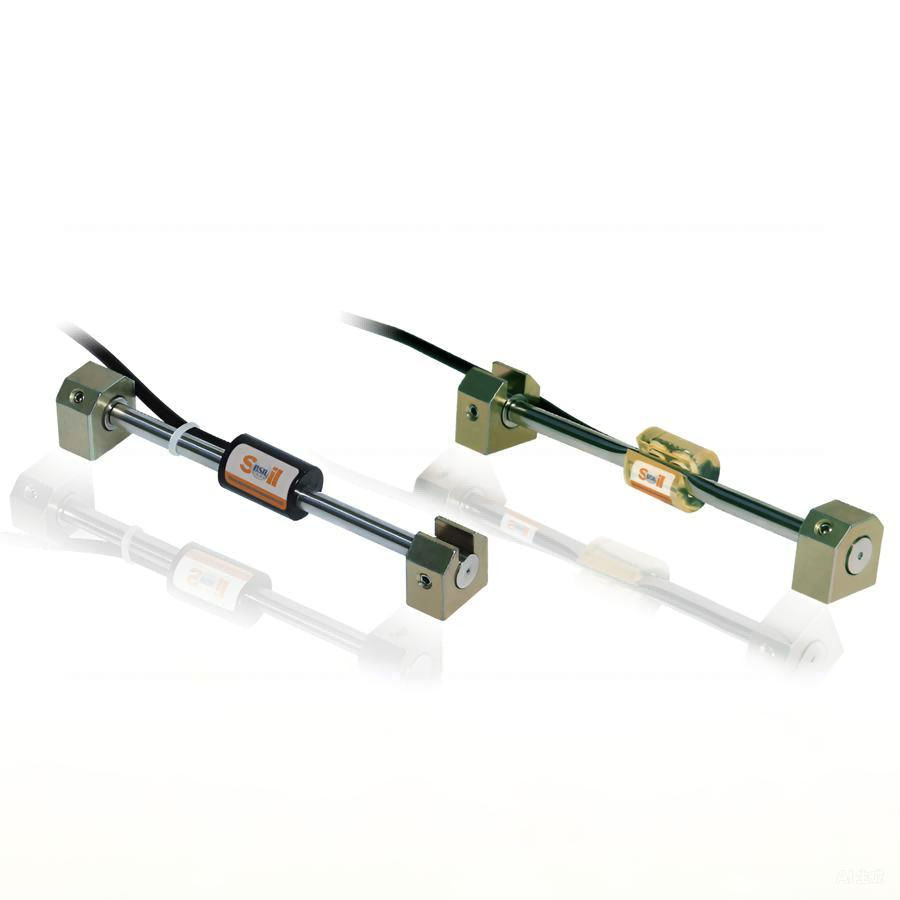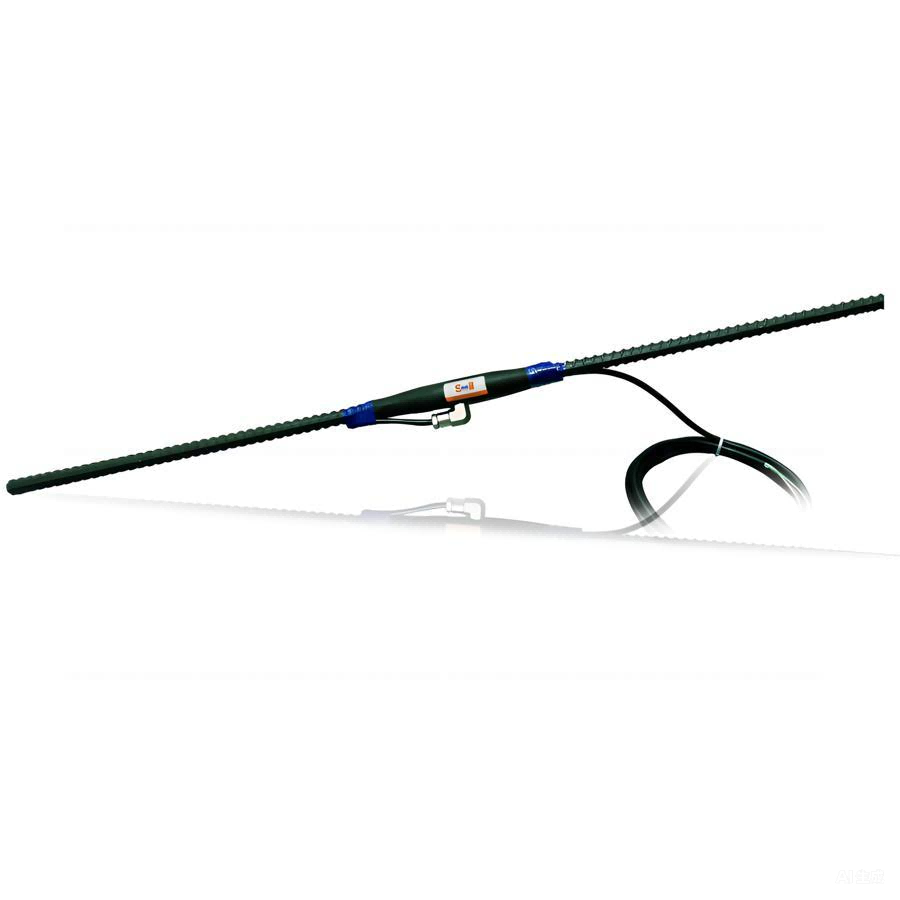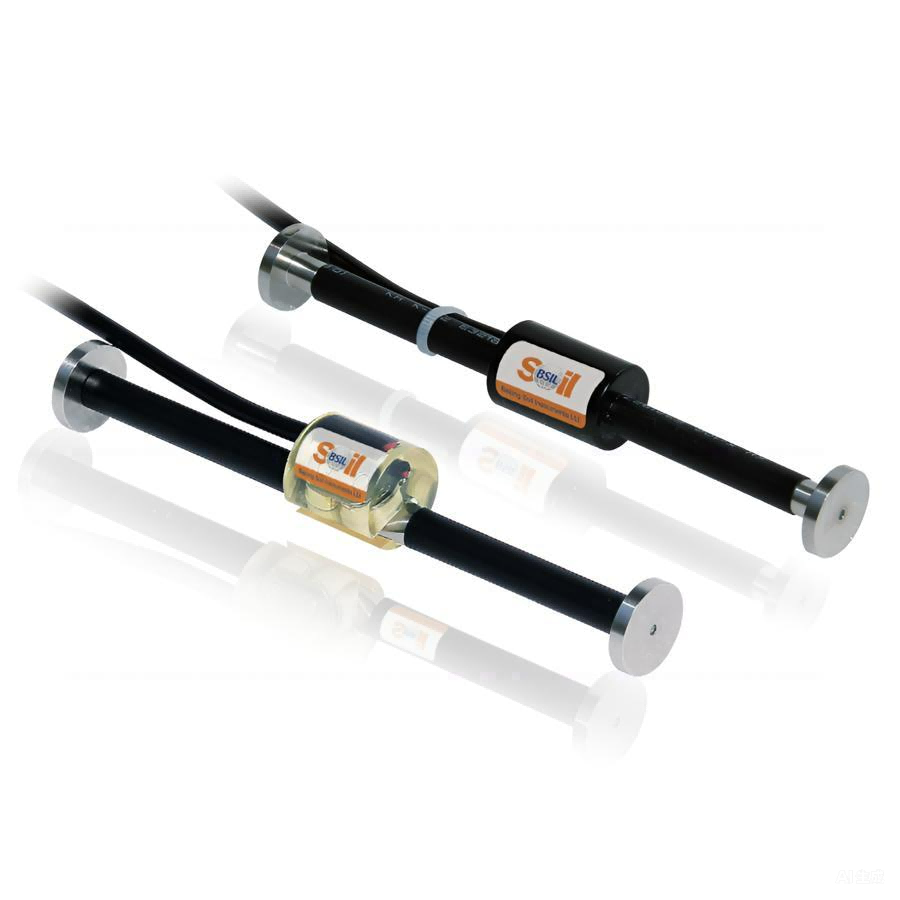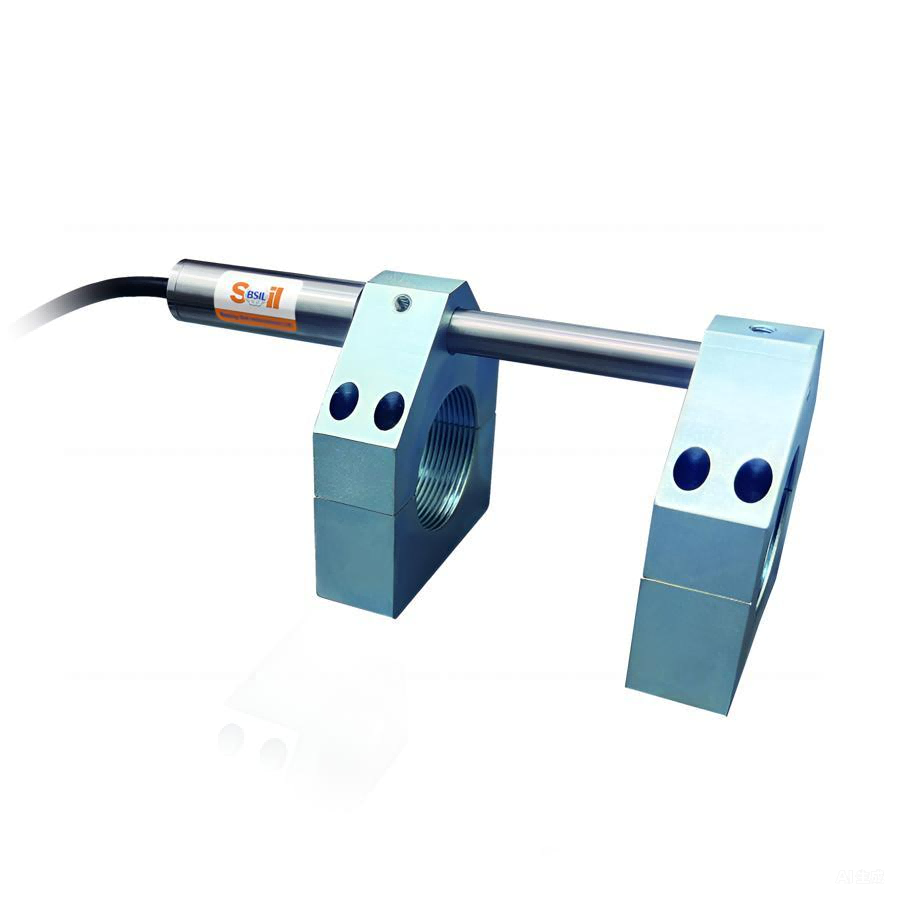Applications
The Model BSIL-ST6 Strandmeter is designed to measure strains in tendons and steel cables, including bridge tendons, cable stays,ground anchors, tiebacks, etc. Two clamps at each end of the strandmeter hold it firmly onto the cable. Various size clamps are available.
Description
The Model BSIL-ST6 Strandmeter is designed to measure change in deformation in wire strands such as those that are commonly used in tiebacks and earth anchors.
The instrument consists of a vibrating wire sensing element and a stress relieved spring which is connected to the wire at one end and a connecting rod at the other.
As the connecting rod is pulled out from the gage body, the spring is elongated causing an increase in tension, which is sensed by the vibrating wire element. The tension in the wire is directly proportional to the extension; hence, the change in deformation can be determined very accurately by measuring the strain change with the vibrating wire readout box.
Key Features
◆Accurate, long-term stability
◆Robust design and reliable
◆Waterproofing
◆Fit for manual or remote reading
◆integral thermistor
◆Gages and coils are re-usable
Main Specifications
Model: BSIL-ST6
Range: 20000με / 50000με
Resolution: 0.01% F.S.
Accuracy: ±0.1% F.S.
Temperature Range: -20 to ~ + 80 °C
Waterproof: Customized
Operation
The Model BSIL-ST6 Strandmeters are using vibrating wire displacement transducers to measure displacements across joints and cracks, in essence, the transducer consists of a vibrating wire in series with a tension spring. Displacements are accommodated by a stretching of the tension spring, which produces a commensurate increase in wire tension.
The wire and spring are connected to a free-sliding rod which protrudes from, and is free to slide inside, a protective outer tube.
An O-ring seal prevents water from entering. The frequency signal is transmitted through the cable to the readout location, conditioned, and displayed on portable readouts or dataloggers.




